We Will Never Forget the Spring of 2020
On May 25 the murder of George Floyd by Minneapolis police ignited a tinderbox over continuing racial and escalating economic inequality in this country. Of course, we were already dealing with the dreaded COVID-19, with its quarantine conditions and millions of people thrown out of work, and a man in the White House who at first denied the seriousness of the pandemic, then compounded the stress lines by suggesting fake cures and making fake grand gestures.
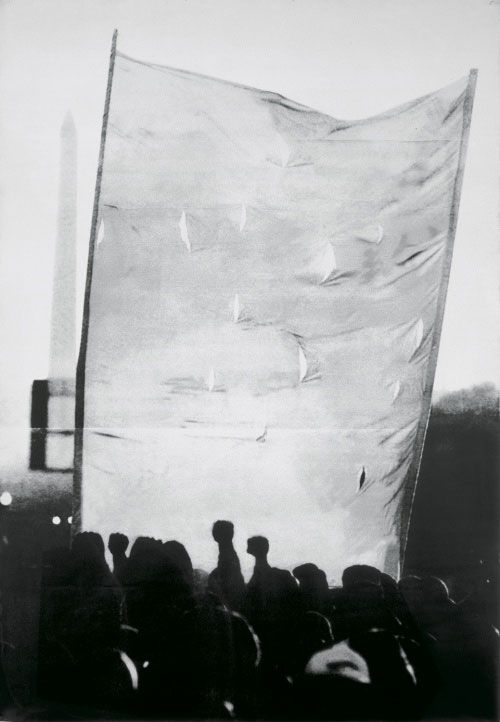
Glenn Ligon, (We’re Black and Strong (I), 1996
Into the fray stepped museums, which seem to feel obligated to be cultural spokespersons, and some tripped in the rush to show support for the cause. There were minor but noticeable trips. A number of museums posted black squares on IG, to show solidarity with the Black Lives Matter movement—and yes, other people, including a lot of well-meaning celebrities, did, too. This resulted in flooding the BLM account with blank black squares, and they were asked to get rid of the hashtag.
One more serious trip-up was up north, at the San Francisco Museum of Modern Art (@sfmoma). On May 30 they posted an artwork by Glenn Ligon (We’re Black and Strong (I) from 1996) on their IG account. Former employee Taylor Brandon, a Black American who had quit the museum earlier this year, called the post a “cop-out,” and said they were “using black artist/art to make a statement that needs to come from the institution. You don’t only get to amplify black artists during a surge of black mourning and pain. Having black people on your homepage/feed is not enough.” The post was soon deleted, because the museum found it threatening. For the record, I have read the entire post, and it did name names, but did not threaten those people.
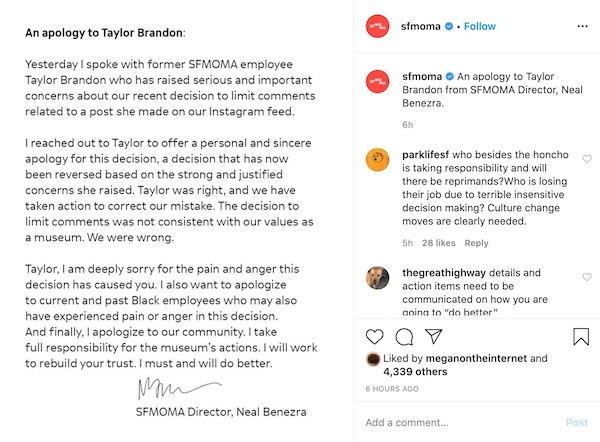
SFMOMA apology to Taylor Brandon.
On June 1 the museum made a more direct statement in support of “the victims of racism and police brutality.” However, they explained their deletion of Brandon’s comment (not naming her) by saying, “We do not and will not remove or disable comments unless they violate those specific parameters, including comments directed at private individuals.” The uproar continued, and on June 4, Museum Director Neal Benezra stepped in, posting a direct apology to Brandon.
That wasn’t the end of it. In mid-June an organization of artists called the No Neutral Alliance came together in support of Brandon, calling for the resignation of Benezra, and posting a list of demands to counter racism at the museum. On June 23 another group, @xsfmOma, said to be composed of former SFMOMA employees, asked the museum to comply with the No Neutral Alliance’s demands.
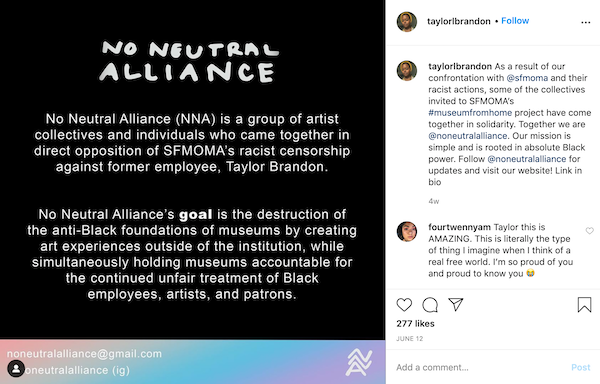
No Neutral Alliance.
Since June 4 the museum’s IG has been silent. On June 29, SFMOMA announced that Nan Keeton, deputy director of External Relations, who had defended the deletion of Brandon’s post, would be leaving the museum July 2. It is said that a Diversity Action Plan will soon be announced. We’ll see.
LA museums have also been under fire. On May 31, the Getty Museum (@gettymuseum) issued a statement on IG, which was criticized for its generic nature. The next day Getty President James Cuno apologized for not being more direct. “We heard you,” he wrote. “We learned that we can do much better expressing our Getty values than we did yesterday, and we apologize.” He went on to say, “We are outraged at the horrific death of George Floyd at the hands of the Minneapolis police, and at the violent deaths of far too many more Black Americans.” The core of the Getty’s mission is “building a vital, civil society.” Comments varied from blasting Cuno for not saying enough to “Sorry you felt you had to cave to the pressure of the thought police. I fear the day they take the place of the police they are trying to overthrow.” Others wondered what the Getty would do next in terms of action to remedy racial and gender inequities.
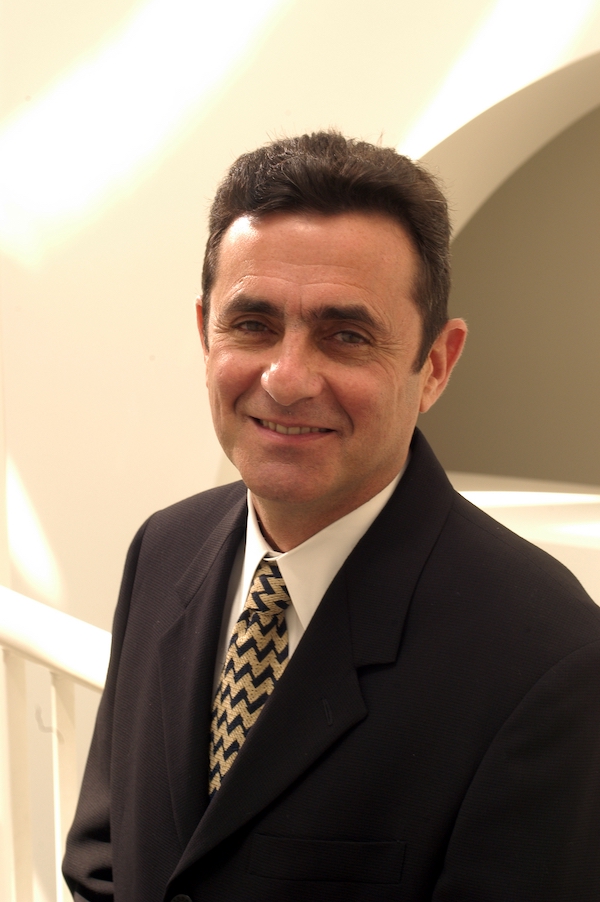
Neal Benezra of SFMOMA.
LACMA, MoCA, The Broad and The Hammer were not spared from criticism—even though they’ve all featured important shows of Black artists in the past decade. Turmoil hasn’t been limited to California—just read up on the Guggenheim NY, where a guest curator accused the curatorial department of deep racism when she organized a show on Jean-Michel Basquiat there last year.
Museums and Galleries Reopen, Maybe
On June 10 the state of California announced that museums could open that Friday, June 12, but I can tell you most museums were totally unprepared for any overnight turnaround. That morning I was on the phone with Suzanne Isken, executive director of Craft Contemporary, who said they were waiting for directives and guidelines from the government. The news came out in the afternoon. I emailed LACMA to ask about their plans; they replied that they would be letting us all know when reopening time comes—which sounds like a couple months or more.
As of writing this, a handful of small to medium-sized museums that include art, such as the Laguna Art Museum, have reopened, and about a dozen have set July and August dates. While the Broad and the Getty have simply indicated summer, the Hammer and the Huntington are looking towards September—the latter two will be jointly featuring the delayed “Made in L.A.” show. No news from MoCA, whose website has only recently been updated—even in June it told us that programs were canceled through April 2020.” (Maybe not surprising with almost everyone there laid off.)
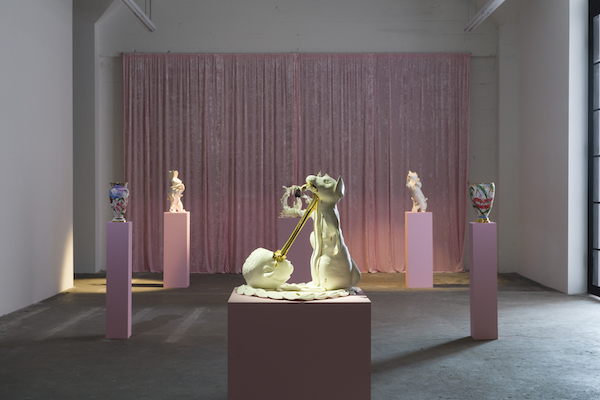
Alex Anderson, Installation view of “Little Black Boy Makes Imperial Porcelains” at Gavlak, 2020
Galleries with smaller and easier-to-control spaces have done a little better reopening—and of course, they need to start selling art again. I’ve been visiting galleries every week or two by appointment. Open are the galleries at 1700 S. Santa Fe (Gavlak, Vielmetter Los Angeles, Wilding Cran and Nicodim); in the West Adams area; plus L.A. Louver and David Kordansky Gallery. I’ve seen three exceptional shows during this time:
The exquisitely made and eerily timely porcelain sculptures of Alex Anderson at Gavlak. In his show,“Little Black Boy Makes Imperial Porcelains,” he managed to address issues of race (he is Black and Japanese American), sexuality (he is gay), and the beguiling interplay of power and privilege (or lack thereof) in representations of snakes, bees, rabbits and Blackface.
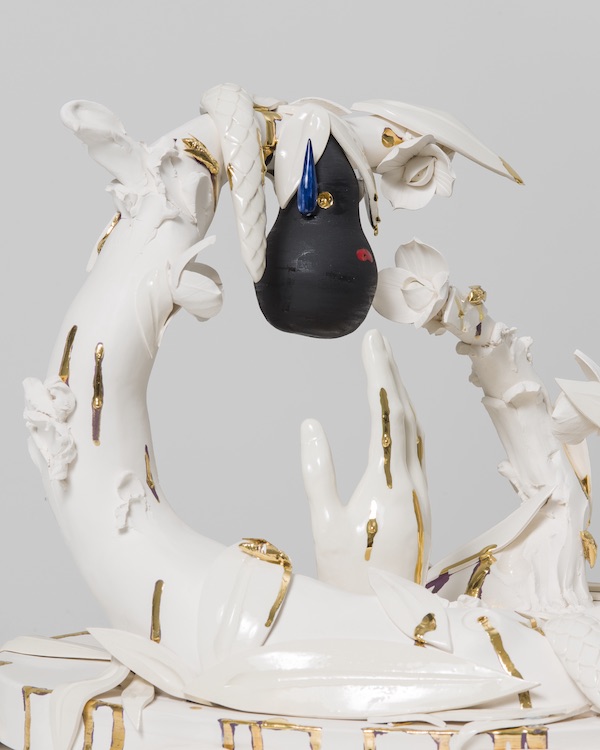
Alex Anderson, Pearanoia, 2019
Simone Leigh at David Kordansky Gallery, with two rooms of sculpture and installation. Her ceramic figures of Black women are stately, powerful and iconic, and are set against layerings of raffia palm leaves in a hut-like structure in the corner of the main room, and in the voluminous skirt of a figure in the smaller room.
Tom Wudl at L.A. Louver: His sublime work in “The Flowerbank World”—paintings of meticulously detailed, abstracted lotuses and jewels in another dimension—was inspired by the Buddhist text, The Flower Ornament Scripture. (see review)
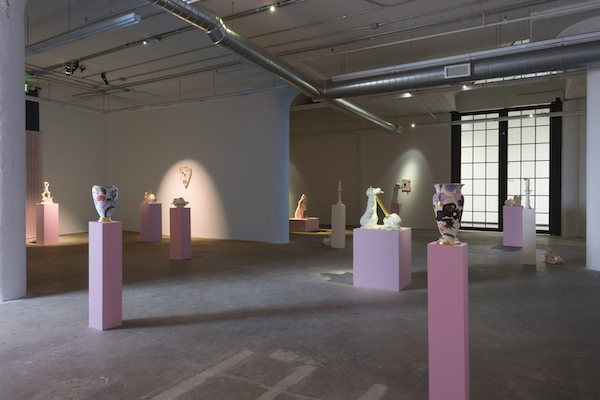
Alex Anderson, Installation view of “Little Black Boy Makes Imperial Porcelains” at Gavlak, 2020
Q-Time bears down on us longer than we expected and, sadly, we’ve had a worrisome uptick in COVID cases the last couple weeks. So on July 1, Gov. Gavin Newsom pulled back on reopenings. He announced that various indoor venues, including museums, must be closed for the next three weeks.
We’re counting the days.





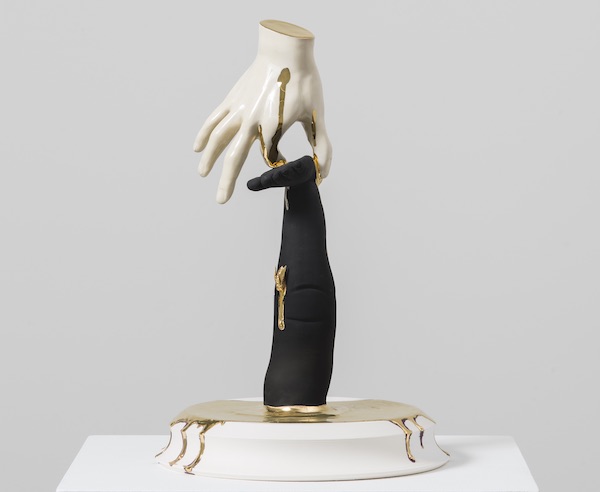





0 Comments